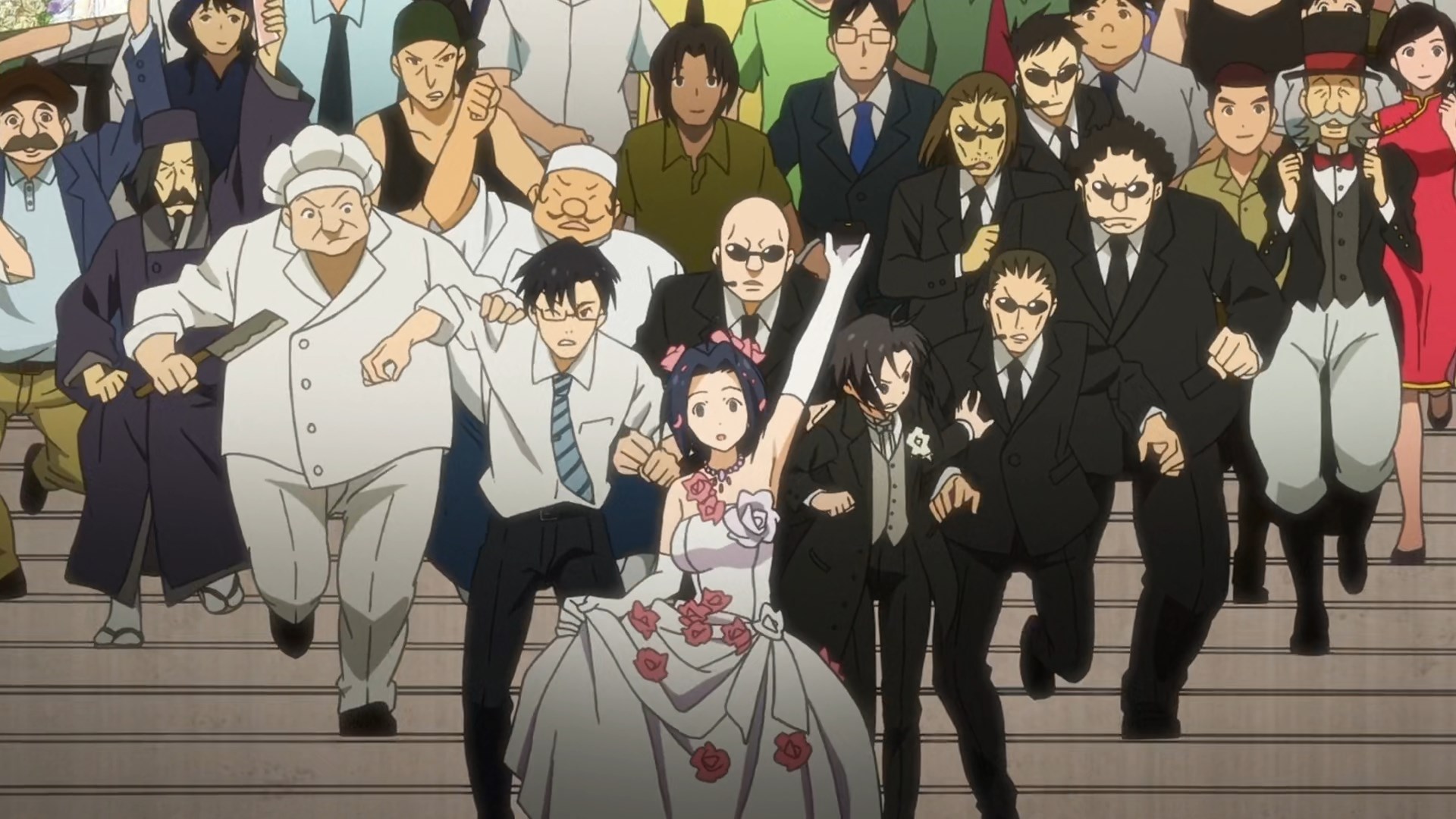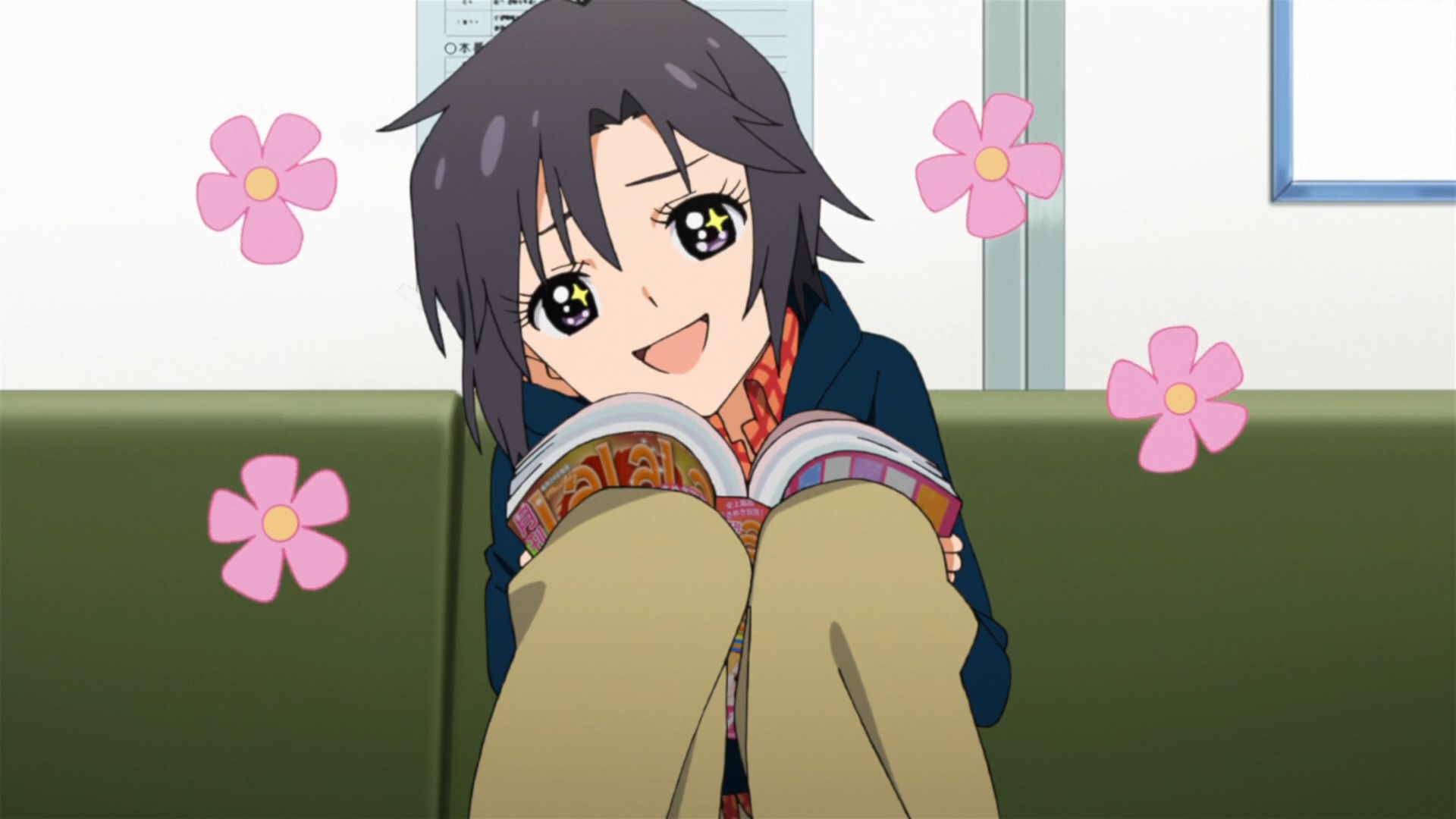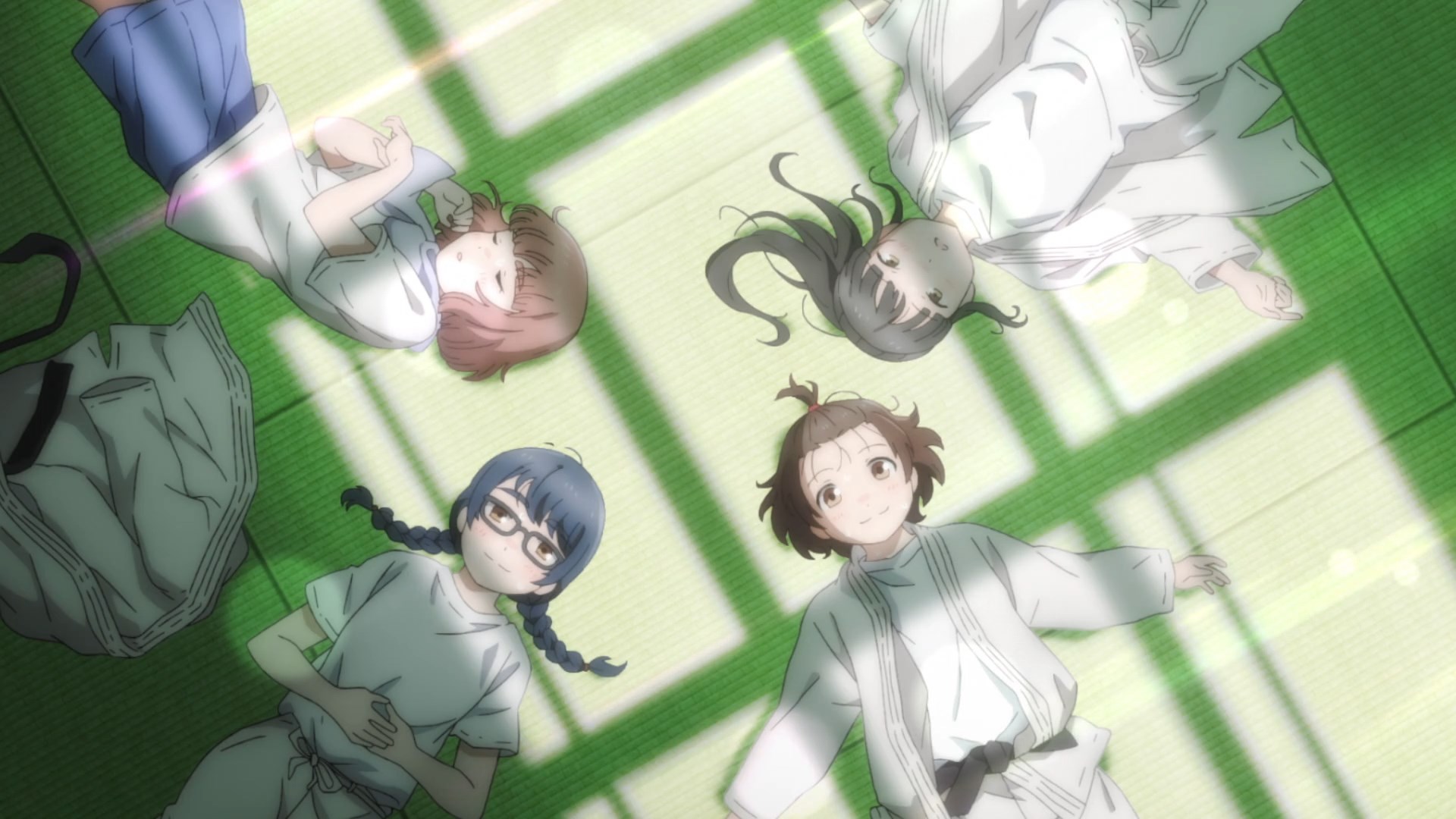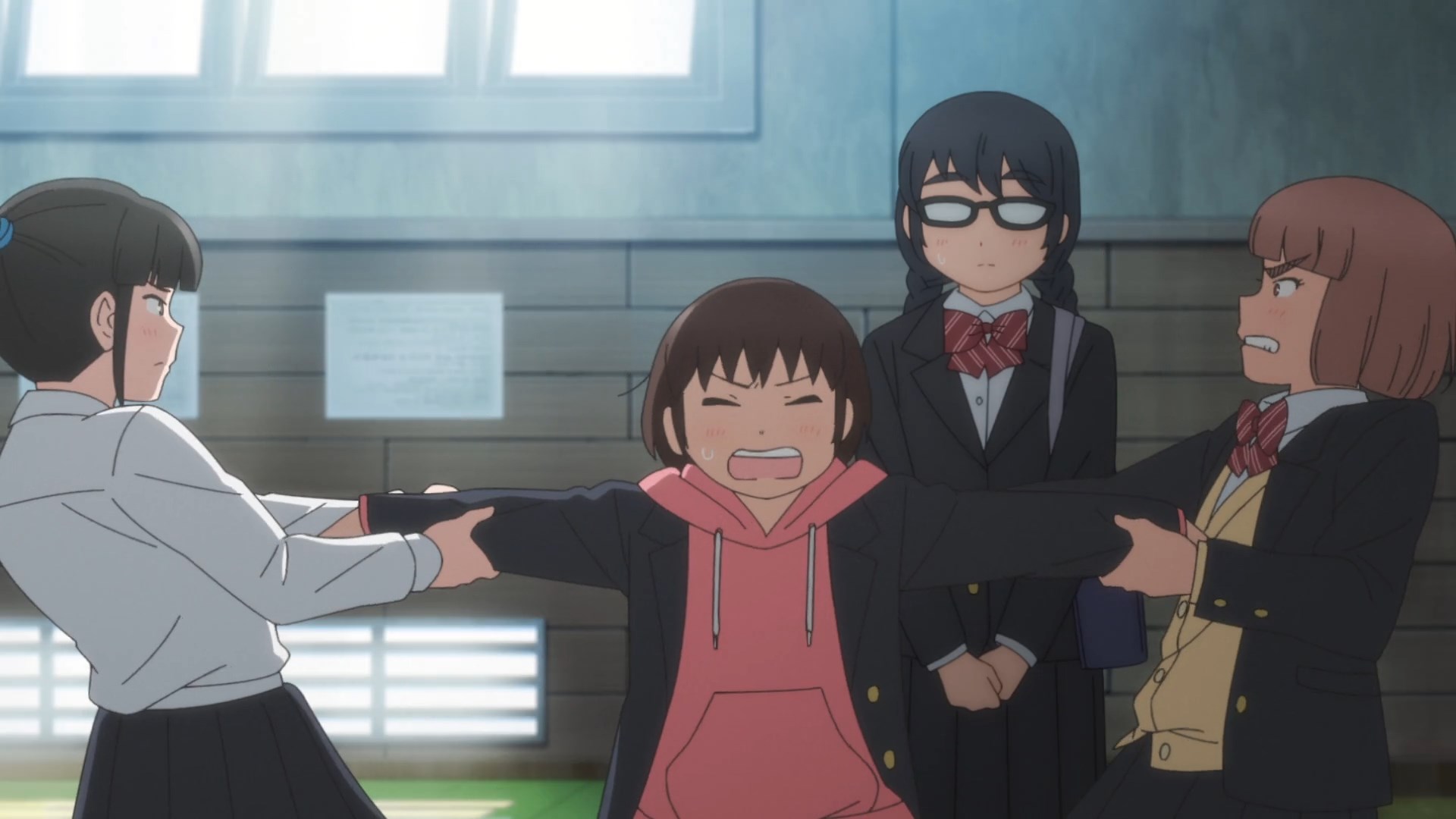The eight episode of The IdolM@ster (2011) is what you get when you take an old fashioned Hollywood comedy caper and condense it into a 22 minute anime:

IdolM@ster started out as an arcade video game which developed into an entire franchise of arcade and console games in which the player usually takes the role of an idol producer who has to make a range of idols famous by guiding them through lessons and live shows and such. It’s been popular enough that the series has gotten multiple anime adaptations. The first was an utterly bizarre mecha show, but the 2011 series, based on the IdolM@ster 2 is one of the best idol anime shows ever released. 765Pro is a small idol agency with twelve idols under its wings and with the protagonist being their new producer, though the focus really is on the girls. It’s a really fun series with the agency at first struggling for success, then struggling with success. I first watched it in 2015 and have rewatched it a couple times since, but this time I just wanted to this particular episode. Why? Well, for scenes like this:
It all starts when three of the idols have a wedding themed photo shoot in a church. Azusa, the one playing the bride takes a selfie to tease a friend of hers with and when the friend calls back, she wanders out of the church only to collide with an actual, runaway bride, on the run from the henchman of an oil baron who wants to marry her. Of course Azusa is promptly mistaken for her and kidnapped by said henchmen, but who led her go once she convinces them she’s not. All’s well that ends well, if not for two problems: a) she has no sense of direction whatsoever and b) she’s still carrying the wedding ring the actual bride dropped. Meanwhile Makoto, the idol playing the groom saw the kidnapping and dragged the producer along to free Azusa. So we now have the runaway bride, the henchmen and Makoto and the Producer all running around town looking for Azusa, who herself is aimlessly wandering around and getting asked for help from various people. It all culminates in the chase scene above, as every party comes together and a happy ending is reached for all…

It all works because Azusa is such a natural airhead as well as kind enough to help lost children find their mum or an old lady look for her son. This sort of thing can be immensely irritating as a plot but here it works because of her charm. Still, the reason I watched this in the first place was for Makoto and the scenes of her fighting those goons. A proper tomboy, raised by a father who’d rather had a son, forbidden anything girly, she’s 765Pro’s Prince, putting maidenly hearts aflutter everywhere. Knight on a white horse for all her female fans, she’d sometimes rather be a princess herself, as she complains to the producer in episode seventeen. It’s a familiar character type, the cool girl who wants to be more girly. The grass is always greener on the other side after all. It can be a bit problematic, reinforcing outdated gender stereotypes, but that’s not the case here. Even when Makoto decides to dress more girly for her ‘date’ with the Producer e.g., the skirt she chooses matches what she’d normally wear. In the end and with the encouragement of the Producer she also comes to terms with how her fans she her, as the only idol who can play their prince, makes them feel princesses like she herself also would like to be. It’s this what makes me like her so much and why she’s perhaps my favourite IdolM@ster character.


